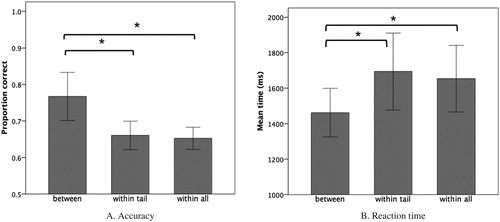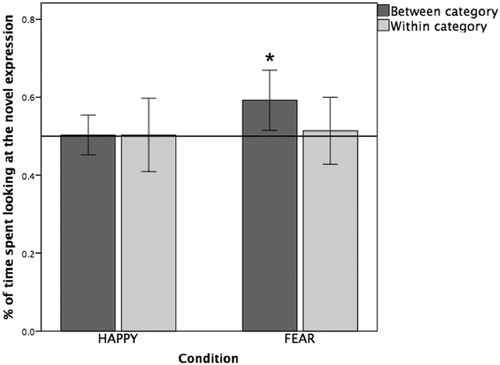Figures & data
Figure 1. Proportion of trials that each morph was judged as “happiness”. Left panel shows results for Model A; right panel shows results for Model B.

Figure 2. Accuracy (panel A: proportion correct) and reaction time (panel B: mean time in ms) of different trial types for Model A. In both plots, the leftmost bars show performance for between-category trials, the middle bars show performance for within-category pairs that lie well within the categories (i.e. the tails), and the rightmost bars show performance for all of the within-category pairs.


